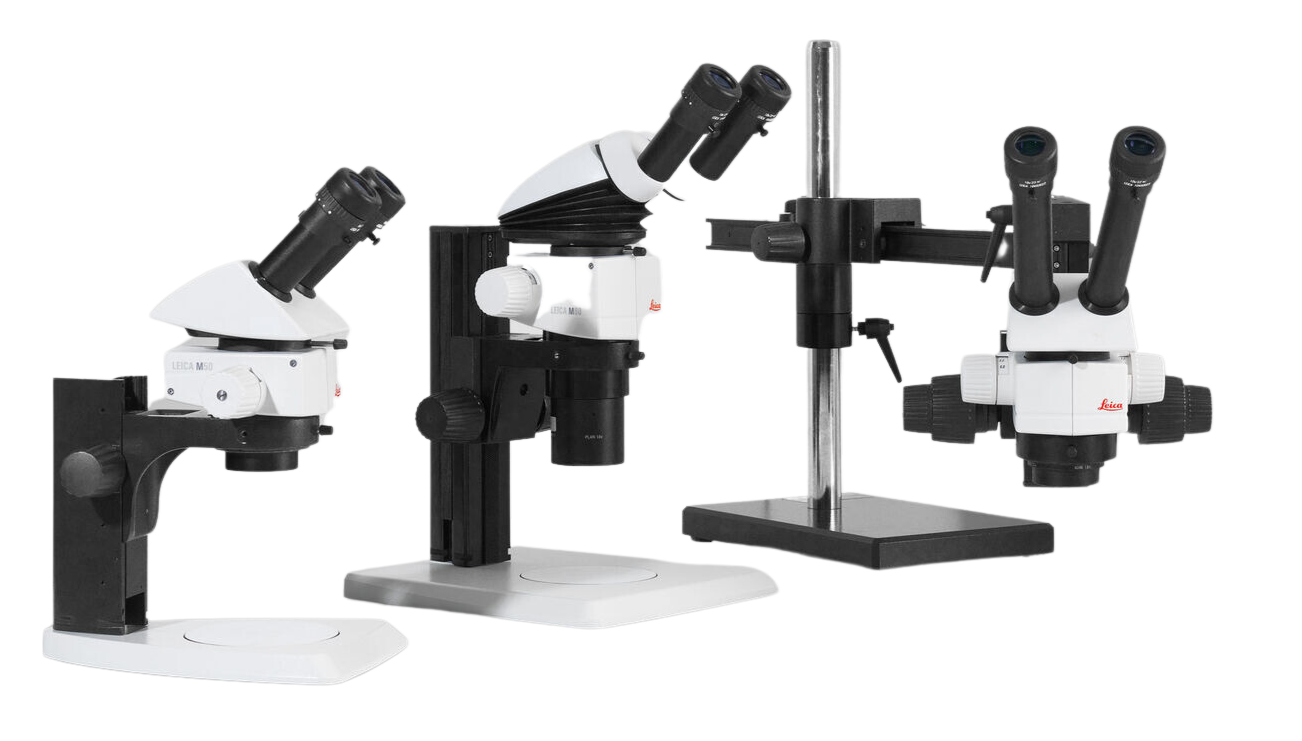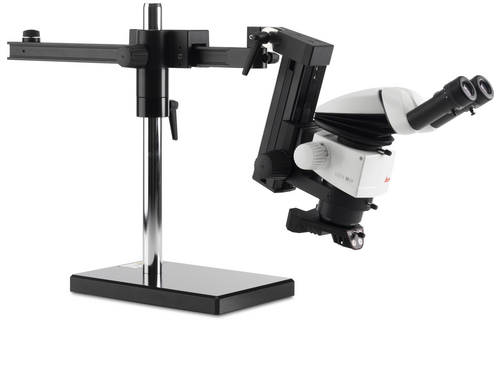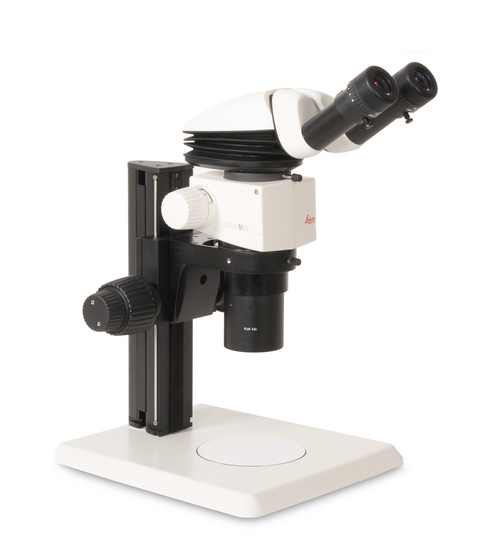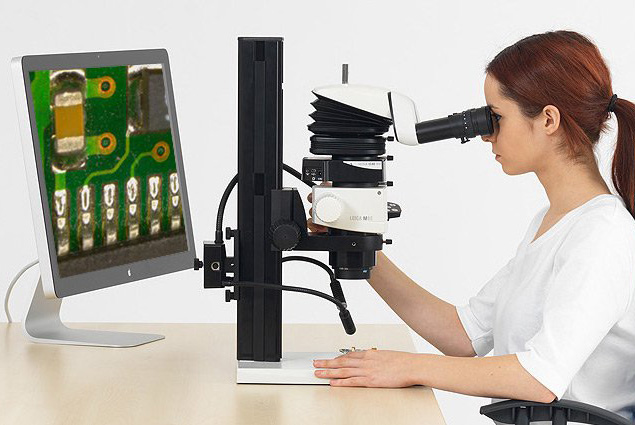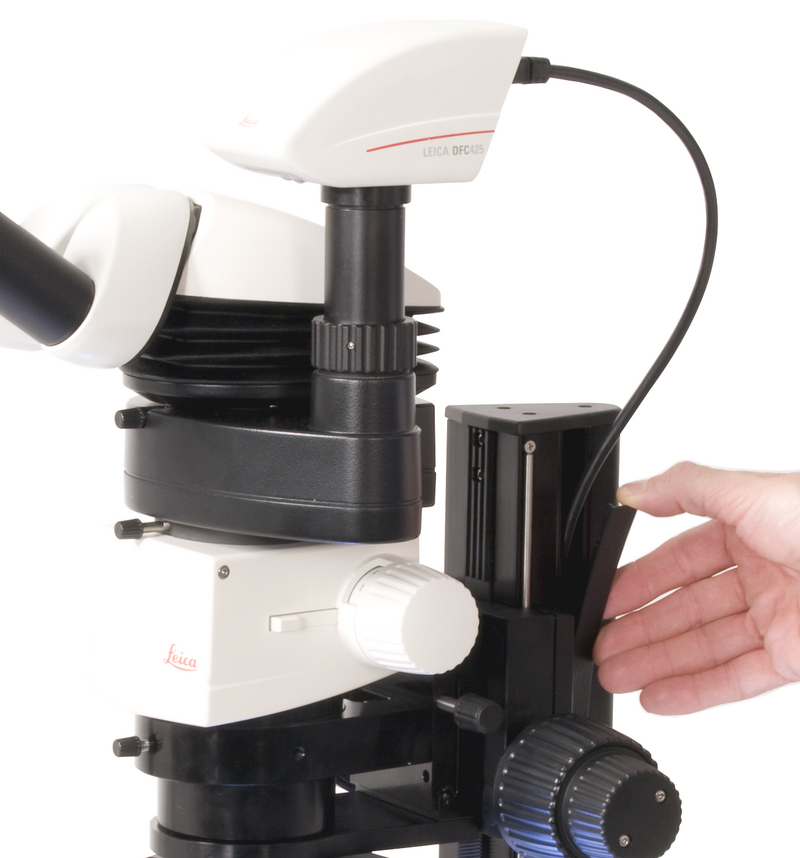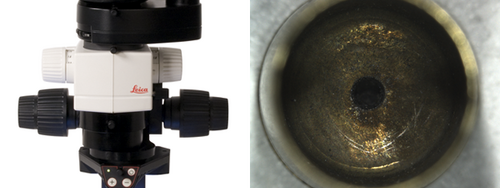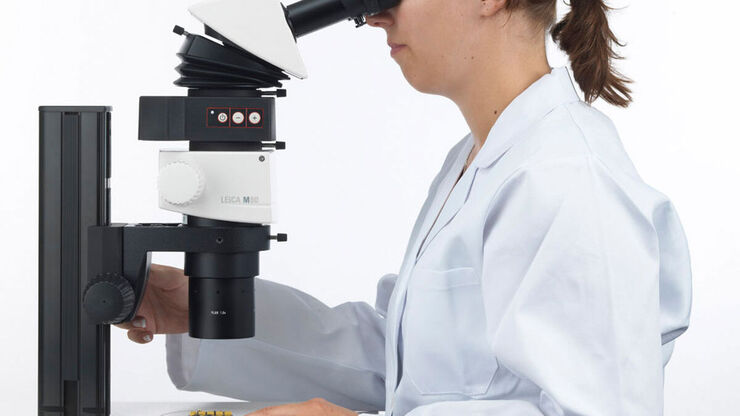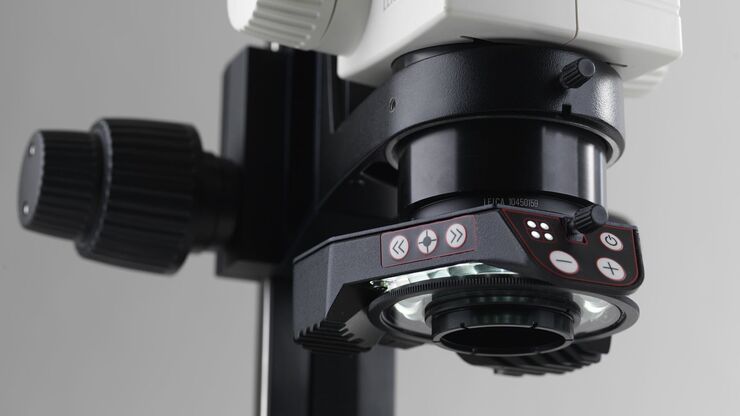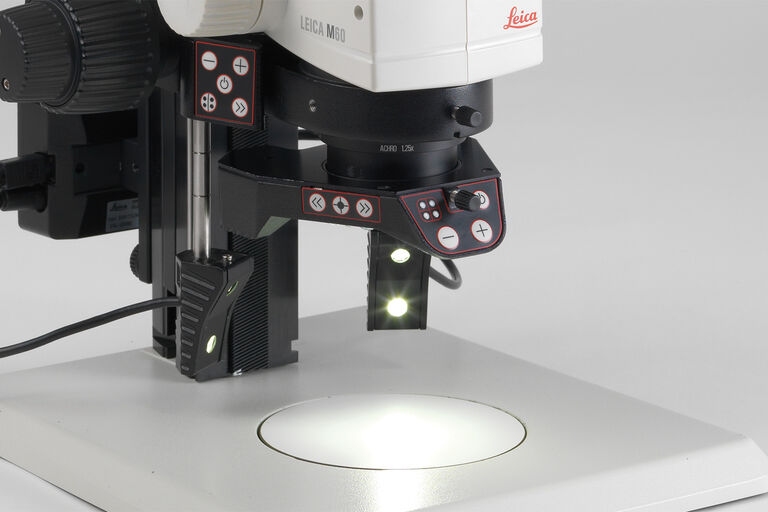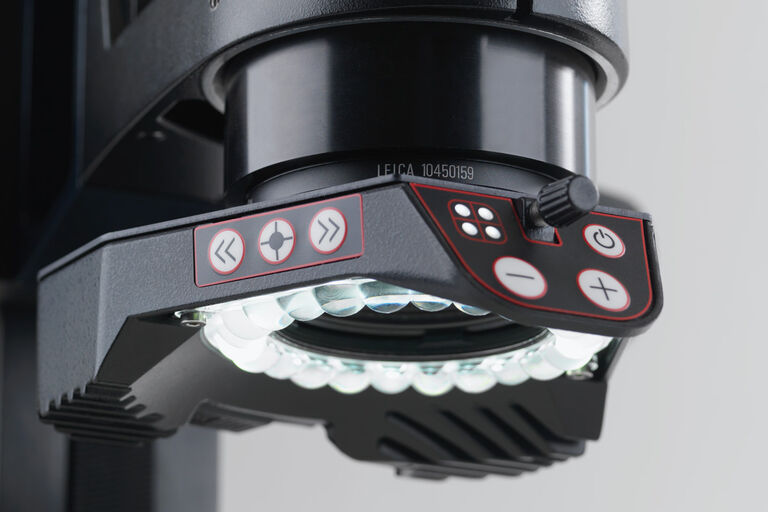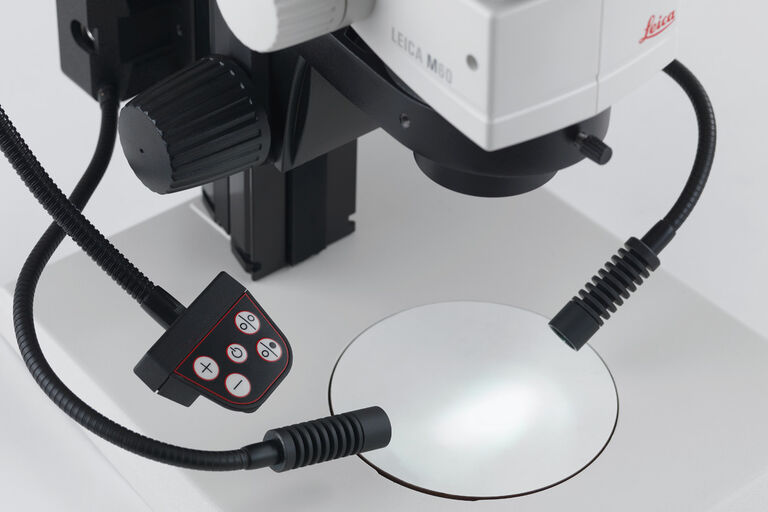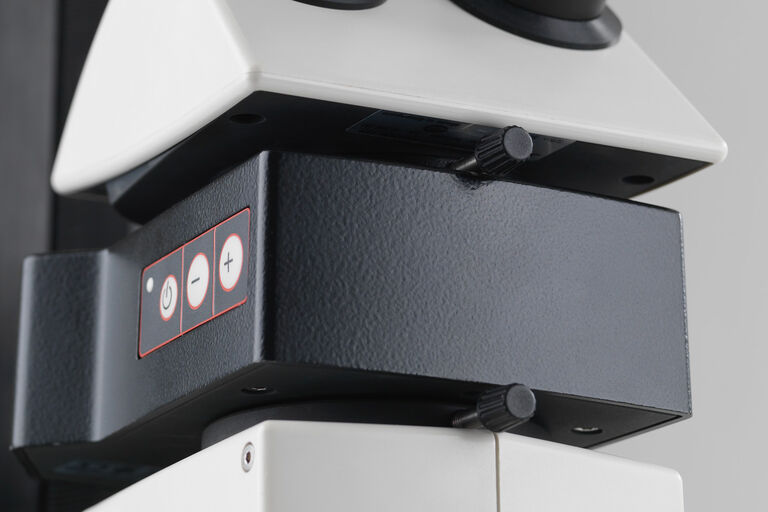Leica M50, M60, & M80 Routine Stereo Microscopes
Efficiently conduct routine inspections and documentation tasks with confidence and flexibility. Leica’s M series modular stereo microscopes provide a wide range of options for life sciences and industrial applications, including the M50, M60, and M80. Gain a broad sample view, work comfortably under the microscope, and easily capture essential details.
Precision in Repetitive Tasks

The M series stereo microscopes offer customized solutions for laboratory and manufacturing operators. These microscopes feature Leica optics that provide exceptional resolution and depth of field for a comprehensive view of relevant structures. With the ability to effortlessly switch between sample overview and fine detail imaging, there is no need to refocus when adjusting magnification. Parfocal optics ensure that your sample remains in focus at all zoom levels.
These three microscopes offer reliable and precise results at different magnification levels for consistent evaluation, for example, in electronic components inspections or screening of model organisms.
- M50 with 5:1-zoom, featuring a step-zoom with five fixed zoom steps at 6.3x, 10x, 16x, 25x, and 40x– allowing 100% reproducible results. The short optics carrier enables high light throughput and provides a large working distance, ideal in animal surgery and similar applications.
- M60 with 6:1-zoom range, with a continuous zoom from 6.3x – 40x including engageable click stops – making repetitive inspection and measurement at a specific zoom position reliable. This system is optimized for a larger field of view to see more at a glance.
- M80 with an 8:1-zoom range, with a continuous zoom from 7.5x to 60x, including engageable click stops, expands your insights and reliability. Optimized for higher magnification to see more minor details in perfect contrast.
High Flexibility with a Modular Concept
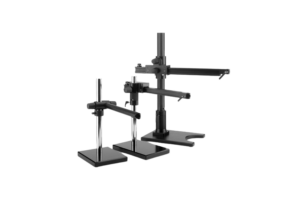 Leica Microsystems offers solutions for all your microscope needs, whether different illumination types, objectives or a larger stand. Transform your microscope into a versatile, comfortable workspace accommodating multiple users.
Leica Microsystems offers solutions for all your microscope needs, whether different illumination types, objectives or a larger stand. Transform your microscope into a versatile, comfortable workspace accommodating multiple users.
Our broad range of accessories helps you to cover all your needs:
- Small, medium, and large incident light bases: Inspect, e.g. printed circuit boards, metal workpieces, or opaque research samples like flies on a fly pad.
- TL transmitted light bases: observe translucent samples or screen model organisms like zebrafish or look for defects in glass and silicone molds.
- XL universal base: accommodate large workpieces; our XL cross-stage has a travel path of up to 300 mm x 300 mm
- Swing arm and flex arm stands: Examine very bulky pieces, e.g. automotive parts or paintings, or adjust your viewing angle when dissecting or pulling pipettes.
- Objectives: Choose from a variety of achromat and planachromat objectives depending on your requirements, like working distance or FOV
We don’t stop at the hardware… The Leica Application Suite (LAS) X, our latest software platform, offers diverse software modules for your specific application needs in Industry or Life Science Research.
Working efficiently with Ergo accessories
Microscope workstations should be flexible to accommodate different users’ needs. Ergonomic accessories can help operators work comfortably for extended periods with the Leica M series customizable stereo microscopes.
- Adjustable viewing heights ensure that shoulder and neck muscles are not strained.
- ErgoTubes promote an upright sitting position by bridging the gap between the microscope and the users’ eyes. This is especially important for tall users.
- ErgoModules bring the microscope’s eyepieces closer to the operator by inserting a wedge below the eyepieces. This promotes an upright posture, regardless of the microscope user’s height.
The right illumination determines what you see!
Depending on your sample, your application, and your task, illumination can make a major difference with regard to what you see or don’t see.
Your choice of illumination for the M series!
Ring light LED3000 RL and LED5000 RL
The most common incident solution guarantees a bright, uniform illumination of the specimen over a large object field at a constant colour temperature. Designed to fit most objectives without a dark spot in the middle.


